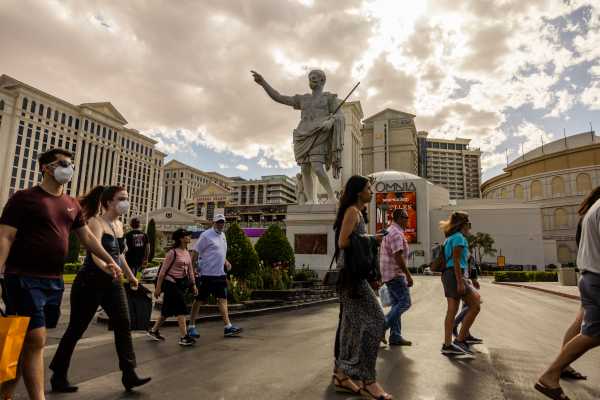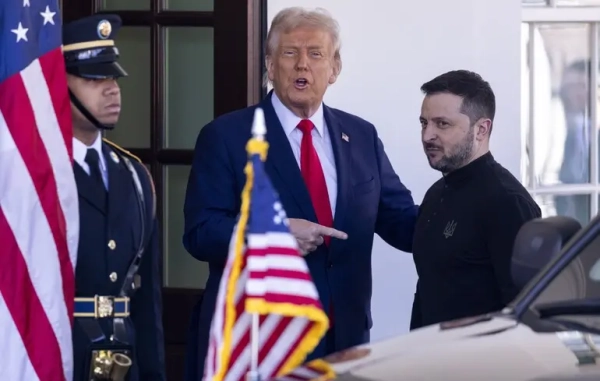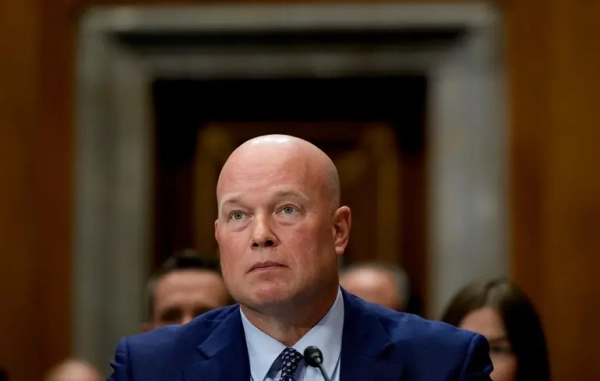
Joe Biden’s election brought a new optimism that a public health insurance option could become a reality. But while the public option, a government-run insurance plan that competes with private insurers, seems to be off the table at the federal level, Nevada lawmakers are pushing to pass their own version before the end of their legislative session.
Nevada would become just the second state with a public option, after Washington implemented its own version of the proposal this year. The Democrat-controlled legislature is racing against the clock — the legislative session ends on June 1 — but the legislation is already moving through Senate committees.
“Now is the time to act,” Nevada Senate Majority Leader Nicole Cannizzaro told me in a recent interview. “This really is designed to be a very reasonable approach to developing another option for folks. It’s not looking to upend the entire system. There are people who are unserved by this system. How do we serve those individuals?”
Sign up for The Weeds newsletter
Vox’s German Lopez is here to guide you through the Biden administration’s unprecedented burst of policymaking. Sign up to receive our newsletter each Friday.
Here are the basics of the Nevada proposal, Senate Bill 420:
- The “public option” plan would be sold on the state insurance marketplace created under the Affordable Care Act, available to the individuals and small businesses that are already eligible to purchase plans there, starting in 2026.
- Health insurers that participate in the state’s Medicaid managed care program would be required to submit a public option proposal; other insurers could also submit a bid.
- The public option plan would offer silver-level (covering 70 percent of medical costs) or gold-level (80 percent) coverage.
- Premiums for the public option would initially be set 5 percent lower than a “benchmark” plan from the private insurance plans already sold on the marketplace; over time, the goal would be to bring the premiums down to 15 percent lower than the benchmark plan.
- Health care providers that accept the state’s Medicaid patients or the state employees’ health insurance plan would be required to accept patients on the public option plan.
The proposal is drawing backlash from health care providers, as Megan Messerly has covered for the Nevada Independent. And some experts contend that, considering most uninsured people already qualify for Medicaid or ACA subsidies, the public option may not be the most effective vehicle for expanding coverage — but could put downward pressure on health care costs.
In our interview, Cannizarro presented it as both: a chance to cover the uninsured and to use the state’s leverage to address health care affordability. A transcript of our conversation is below, edited for length and clarity.
Dylan Scott
The toughest problem for a public option proposal is how much to pay providers. Have you settled on payment rates?
Nevada Senate Majority Leader Nicole Cannizzaro
We wanted to be very cognizant of the fact that our providers are a huge piece of this. We didn’t want this to turn into a situation where they would be at Medicaid rates. So we don’t have a particular rate set in the bill.
We do have in the bill that the floor would be at least Medicare rates or better. The whole goal of this is that we want to reward those who are bidding on a public contract for being able to provide really value-based services and for being innovative in terms of health outcomes. What we are trying with the language in the bill was to ensure that it would be at least Medicare or better. The reimbursement rates for providers are a bit higher for Medicare, obviously, than for Medicaid. There’s no prohibition in terms of the procurement for them to negotiate rates that are higher, and that’s what we would envision. They’re going to be paid a fair amount for the services that they are providing.
When we’re looking at those bids, we want to really look for those plans that are going to be able to provide continuity of care. Hopefully, we can negotiate some good rates for our providers, especially because these individuals that would be open to the public option would be individuals who are currently not insured.
We’re talking about getting people who otherwise are costing the system a lot of money in their care … into a place where they can have consistent, ongoing, preventative health care and the speedy and remedy treatment of any more acute problems that come along, so we don’t have them showing up in emergency rooms with a whole host of issues that have been ongoing yet unable to be addressed because of that lack of access to health care.
Dylan Scott
With the requirement that if you take the state employee plan or Medicaid already, you must take the public option, do you have any sense of how many providers would fall under those parameters? Do you expect most health care providers would take the public option plan unless they were willing to lose all these other covered patients?
Nicole Cannizzaro
Absolutely. We are trying to make sure that this is a statewide plan.
That’s so hard here in Nevada; especially for our rural communities, access to health care is difficult. Having all those providers builds network adequacy, so people can actually get in and see a provider. They don’t just have health care but can’t seem to find a doctor, because that is akin to having no health care.
Dylan Scott
How did you arrive at the goal of initially offering premiums that are 5 percent less than a benchmark plan? What was the motivation for it? Is this about cost containment or covering the uninsured?
Nicole Cannizzaro
One of the interesting pieces about Nevada is that we have a relatively high uninsured rate, about 11 percent. That’s been pretty consistent, which is about 350,000 Nevadans that just don’t have health care. We ranked seventh in the nation for our uninsured rate. But at the same time, we’re one of the only states in that top seven that actually did participate in Medicaid expansion. So we have had Medicaid expansion here in the state, yet we have this persistently high uninsured rate.
What can we do as a state to address that? If you’re out in communities and talking to people about what is on their minds, you will hear, “I can’t afford health insurance because the premiums are too much for me to pay.” Or, “If I have a smaller employer plan, it’s a lot for me to pay, but I also don’t have good coverage,” so it’s functionally the same as not having health care if you can’t utilize it, because you can’t pay either a high deductible or you can’t afford the premiums.
There is still this population that is not being served by what we currently have — not employer-based plans, not the exchange, not Medicaid. If we can lower premiums, that would incentivize and bring people onto the public option. So that’s really where we decided that we would implement the 5 percent, and then 15 percent over four years.
The state can leverage federal dollars with waivers to help do that. You as an individual going onto a marketplace and trying to negotiate with the insurer to lower your premiums is something where there’s no market power there for the individual who has a couple kids and is trying to buy health care. But the state of Nevada has some leverage.
Dylan Scott
Had you all looked at other models? Washington has done something here in the last couple of years with a public option. You have other state-level proposals that fizzled out in Colorado and Vermont. There’s not necessarily a lot of real-world evidence to go off of in terms of what works and what doesn’t. How much were you able to draw on any lived experience versus doing the best you can and we’ll see how it works?
Nicole Cannizzaro
Nevada is in a bit of a unique position with so much of our population being uninsured. Over the course of the last few years, here in Nevada, we’ve been looking at how do we tackle the cost of health care, and we’ve done that in a variety of different contexts. We’ve talked a lot about prescription drug pricing generally. A few years ago, there was a bill that was a Medicaid buy-in option that had been vetoed by the governor. One of the things that was noted was that we really needed to kind of look into this and study it and look at the populations and look at what it is we were doing.
That one didn’t really seem to be, I think, the right path forward for a lot of folks. So last session, we looked at a couple of different ways to tackle health care costs, one of which was a study prior to that Medicaid buy-in. We looked at that and said, “Okay, if we really do need to take a look at this, maybe that is what we need is some actuarial data behind it, so that we can have something to build on and get an idea of what could work.” We passed a resolution in the 2019 legislative session, and that specifically asked for the state to look into the feasibility of a public option and explored a couple of different options.
One was a public option. Then one was a buy-in to the state employee benefits program. That gets a little tricky, because you have to restructure what that program looks like and it’s something that’s been in place for a long time here. How do you start to pay for something like this? How do you restructure an entire benefits program for all of these state employees who have been on it for a very long period of time and are currently buying into it? What does that do to the risk pool? And all of these questions. So that didn’t really seem to be quite as viable of a path as we would have liked.
We took a look at what the public option would look like here in the state, and then built on that. We’re drawing on all of that experience and all of our inquiries into health care costs, as well as looking at what other states are doing, and putting something together that I think is going to best serve Nevadans.
Additionally, I would note, because we’ve built in some lead time here for procurement and, ultimately, implementation of the public option, one of the things that’s contemplated in the bill as well is that we will be able to do actuarial analysis in the interim that we feel is appropriate. It gives us the opportunity to not only draw on our prior data, but then look at what we’re in the process of putting into place to make sure that what we’re doing is going to really help the issue.
Dylan Scott
One of the interesting things about a public option is how many different forms it can take. There are all these levers you can pull to make access to it more expansive or restrictive. It seems like you are starting with the conception of the public option from the ACA debate: Put it on the exchange for exchange-eligible folks.
But obviously, we’ve seen more recently, at the national level, Democrats proposing bigger versions of a public option. Maybe people who have employer insurance would be able to buy in if they wanted to, or maybe even their employer could pay for them to join the public option.
Could you imagine this public option growing to potentially cover more Nevadans, or would you not want that to happen?
Nicole Cannizzaro
Right now, it’s something that we really are trying to just focus on that individual and small-group market, because that’s such a need here. The vast majority of our folks who are insured are insured under employer-based health plans. And most people seem to like their employer-based health plans. It’s affordable and accessible. We’re not looking necessarily to upend that. We are trying to get it to the folks who just don’t have an option for health care.
You never know what the future would bring and what this might look like. But that’s certainly not our intention.
Dylan Scott
My last question is both the hard and easy one. Are you gonna get it done this year?
Nicole Cannizzaro
I’m very committed to getting this over the finish line. There have been a lot of inquiries and studies into this. Now is the time to act. This really is designed to be a very reasonable approach to developing another option for folks. It’s not looking to upend the entire system. There are people who are unserved by this system. How do we serve those individuals? And it costs hospitals, providers, employer-based health plans, and other individuals money to have uncompensated care in the state.
I think that’s something that we all agree on, that we want to tackle. We want to promote affordability and accessibility. This is the right step forward that is very contemplated and purposeful. So I am very committed to getting it over the finish line.
Will you support Vox’s explanatory journalism?
Millions turn to Vox to understand what’s happening in the news. Our mission has never been more vital than it is in this moment: to empower through understanding. Financial contributions from our readers are a critical part of supporting our resource-intensive work and help us keep our journalism free for all. Please consider making a contribution to Vox today from as little as $3.
Sourse: vox.com






